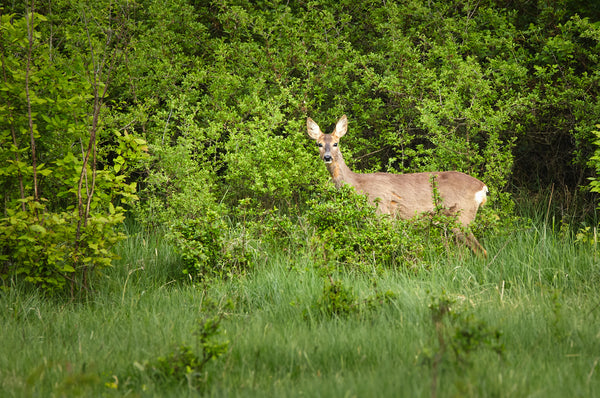Should Your Next ‘Bath’ Be in the Forest?
Yep, it’s a thing…Forest Bathing…a big thing actually!
A quick search revealed no less than 9 books on the topic, and loads of research. It’s huge on social media and the original movement across Asia is booming. Forest bathing (it's Japanese name is ‘Shinrin-yoku’) is a health-based therapy that has been used for over 30 years. 67% of the country is covered in forest, which probably has a lot to do with its success as a therapy. 16% of Australia is forest, but that hasn’t deterred us; we love the great outdoors and there are already several forest bathing tour guides in Australia.
‘Shinrin’ means forest and ‘yoku’ means bathing. Simple. So beautifully simple. I always love it when intuition and instinct align with the research.
We are discovering that our instinctive pull to nature for wellness has identifiable mechanisms that we are able to study. ‘Forests and other natural environments are recognized as fundamental health resources and may play a role in disease prevention’ (Lee. et.al. 2017) Not only is it recognised for disease prevention but also management and care of people with an existing condition.
What Are The Benefits?
- Psychological / emotional – beneficial for anxiety and depression, stress management, burnout, positivity, vitality and a sense of gratitude and purpose
- Physiological – immune system function, inflammation, blood pressure, heart rate, blood sugar levels, pain, metabolic disease markers
Let’s Break That Down A Bit…
When people spend time in forests under study conditions it simply means that we assess factors such as their mood, their blood pressure or their pain scores before time in nature and then again after. Most of the research around forest bathing has looked at people who have spent 1-3 days in the forest. These volunteers score their emotional state - commonly through a profile of mood score (POMS) - and the results are pretty compelling. People report a pleasant feeling, a relaxed feeling, and a sense of contentment. This effect is true for young healthy individuals, older individuals and people with a chronic health condition. For example, depression and anxiety is a common condition affecting people after they have had a stroke. Forest bathing has been found to improve post-stroke anxiety and depression. So no matter who you are, male or female, young or old, well or unwell, forest bathing can improve your psychological and emotional wellbeing. Most profound is that forest bathing is connected to having a sense of purpose, awe and gratitude.
What About My Physical Condition?
Is forest bathing going to lower my blood pressure? Affect my physical body?
The short answer is YES. That, and so much more. This is perhaps the most exciting part of the forest bathing research because, as humans, we’ve always known we feel good in nature (even if, in the Western world, we spend 90% of our time inside). What we can measure in our bodies when we spend time in forests and in nature is profound. I’ll list a few:
- Improved immune system function – this is indicated through an increase in natural killer (NK) cells and an increase in B lymphocytes. These components of the immune system suggest to us that your immune system is functioning more effectively.
- Improved cardiovascular markers – your blood pressure drops. It doesn’t matter your gender or age, or even if you move (walk) or stay still in the forest, you still get a drop in blood pressure and heart rate.
- Metabolic disease – this is exciting. I’m not saying a whip through the forest is going to sort out that packet of Tim Tams you ate, but forest bathing can improve levels of adiponectin, a hormone. In people with obesity and diabetes, adiponectin is lower than normal.
- Anti-cancer potential – proteins which we have identified as being anti-cancer (perforin, granulysin, and granzyme) are expressed more after forest bathing.
- Turning off the sympathetic nervous system (SNS) and turning on the parasympathetic nervous system (PNS) – Hello relaxation, blood flow to the gut, enhanced bowel function, digestion and fertility. All the things that help us heal, repair and thrive. We enter the ‘rest and digest’ state when forest bathing, as indicated by a decrease in heart rate and subjective reports of relaxation.
- Enhanced respiratory function – particularly in relation to allergies and lung disease.

What are the mechanisms here? Why does time in nature affect our bodies so profoundly?
Researchers trying to piece together the magic of nature and its affect on our physiology have a few theories. These include:
- Improved air quality in the forest – health outcomes associated with poor air quality in urban areas are well established
- Higher levels of negative oxygen ions – feeling of wellbeing and mental clarity
- Essential oil absorption from tree wood – immune effects and anti-inflammatory effects
- Removal of SNS activating factors such as noise and light – the noise, filtered relaxing light and sunlight in the forest enhance activation of the PNS
As novel as forest bathing is, it speaks to a deeper message about how our human bodies react to time in nature. ‘Cyrus the Great’, ruler of Persia, knew enough of the benefits of nature when he built extensive gardens within the city of Persia 2500 years ago. He was known as an ethical, considerate leader and hoped to promote peace and calm within his walls, so he built a garden.
We are increasingly demanding green space within our urban areas. Research conducted on green space consistently shows that those exposed to plants and nature regularly have a host of beneficial outcomes similar to forest bathing including a sense of purpose, gratitude, peace and relaxation. This effect extends as far as not only indoor plants, but looking at pictures of plants. Really? A picture? Yep. Amazing that people can have tangible, real, physical benefits by tapping into a deeply human need for nature. Just between you and me, I would not opt for posters of plants on my office wall, but a lunch break outside…
How Does Forest Bathing Affect The Microbiome?
So far, research has been targeted to physiological outcomes for chronic disease: BP, HR, inflammatory markers. However, here are the ways in which we can positively affect our microbiome through time in nature:
- Lower toxic load in the forest
- Movement – well evidenced, positive effect on the gut
- Exposure to soil-based organisms which contribute to gut health
- Activation of the PNS means healthier microbiome
- Positive emotions, lower anxiety means beneficial effects on the microbiome via the gut-brain axis
Whatever you call it, Shinrin-yoku, forest bathing, green space or nature therapy, the evidence is in. It is believed that to have the best benefits we need recurrent exposure. So get outside and do it regularly. Go hiking, take a picnic, run in the bush, plan your holidays in nature instead of theme parks. Connect with the earth and, in doing so, that place within you where you find peace, a sense of purpose and well-being.

References
- http://www.besjournal.com/Articles/Archive/archive/No3/201207/t20120712_64252.html
- https://www.ncbi.nlm.nih.gov/pmc/articles/PMC4963577/
- www.agriculture.gov.au/abares/forestsaustralia/australias-forests
- https://www.ncbi.nlm.nih.gov/pmc/articles/PMC5580555/
- https://link.springer.com/article/10.1186/s12199-017-0677-9
- http://www.abc.net.au/news/2017-06-18/shinrin-yoku-forest-bathing-experience-to-help-with-stress/8626042
- https://www.ncbi.nlm.nih.gov/pubmed/28814305
- https://www.ncbi.nlm.nih.gov/pmc/articles/PMC5559777/
- https://link.springer.com/article/10.1186/s12199-017-0677-9
